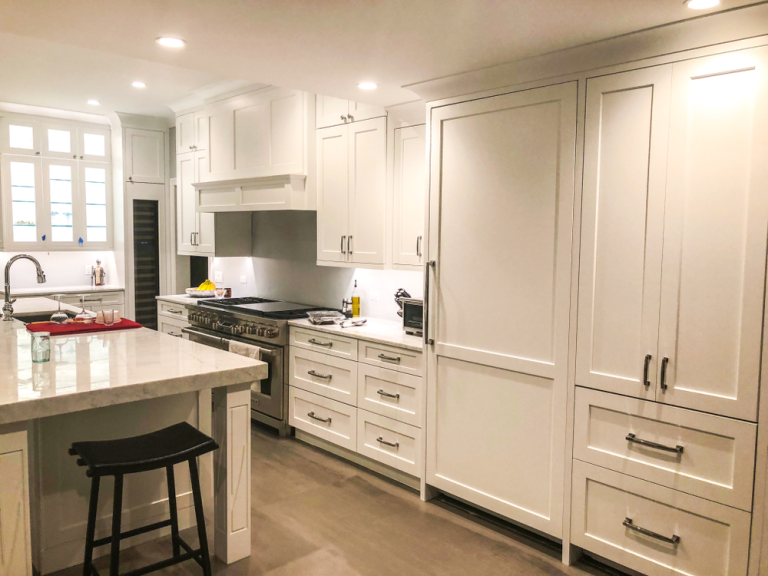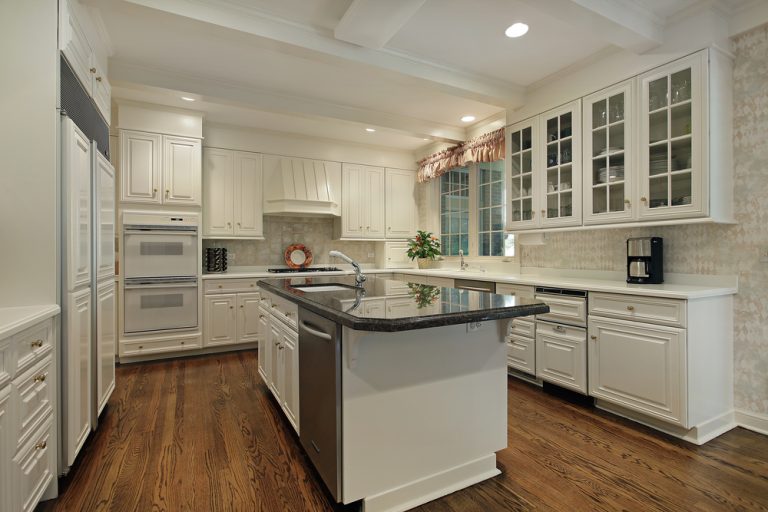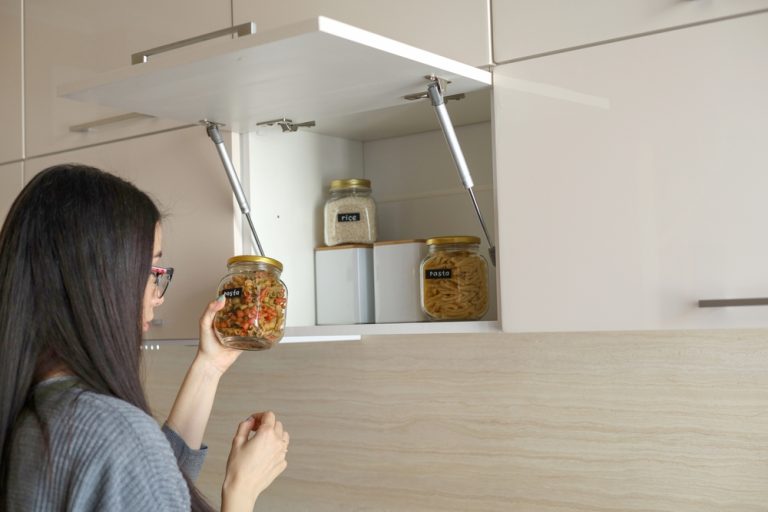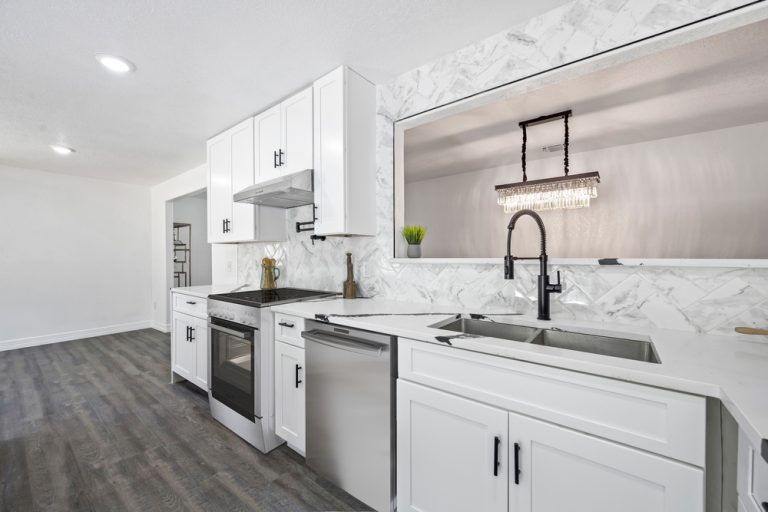Why Are Kitchen Cabinets So Expensive?

When planning a kitchen remodel, one of the biggest expenses homeowners face is the cost of kitchen cabinets. In fact, cabinets often account for a significant portion of the total renovation budget, sometimes up to 40% or more. But why are kitchen cabinets so expensive? Understanding the factors that drive up the cost can help you make informed decisions when planning your kitchen upgrade.
In this blog, we’ll explore the various reasons why kitchen cabinets are expensive, from the quality of materials and craftsmanship to the customization options and installation costs. By the end of this article, you’ll have a clearer understanding of what goes into the price of kitchen cabinets and how to balance quality with budget.
6 Reasons Why Are Kitchen Cabinets So Expensive?
Quality of Materials
One of the primary reasons kitchen cabinets are so expensive is the quality of materials used in their construction. Cabinets can be made from a variety of materials, each with its own cost implications.
Types of Materials
- Solid Wood: Cabinets made from solid wood, such as oak, maple, cherry, or walnut, are highly durable and offer a timeless aesthetic. However, solid wood is one of the most expensive materials due to its strength, longevity, and natural beauty.
- Plywood: Plywood is a high-quality material often used in cabinet construction. It is more affordable than solid wood but still offers good durability and resistance to warping. High-grade plywood, especially that with multiple layers of veneer, adds to the cost.
- MDF/Particleboard: Medium-density fiberboard (MDF) and particleboard are more affordable alternatives, but they are less durable than solid wood or plywood. Cabinets made from these materials are cheaper but may not last as long, which can increase the total cost over time if they need to be replaced sooner.
Hardware and Finishes
- Premium Hardware: High-quality hinges, drawer slides, and handles contribute to the overall cost of kitchen cabinets. Soft-close mechanisms, for example, are a desirable feature that adds to the expense.
- High-End Finishes: The finish on the cabinets, whether it’s paint, stain, or laminate, also affects the price. Custom finishes, glazes, or high-gloss paints require more labor and materials, driving up the cost.
Customization Options
Customization is another major factor that increases the cost of kitchen cabinets. The more customized your cabinets are, the higher the price.
Custom Cabinets
- Tailored Design: Custom cabinets are built to your exact specifications, which means they are designed to fit perfectly in your kitchen, regardless of the space’s dimensions or layout. This level of customization requires skilled labor and detailed craftsmanship, both of which are expensive.
- Unique Features: Custom cabinets often include unique features like built-in organizers, pull-out shelves, lazy Susans, and specialized storage solutions. These features require additional materials and labor, increasing the overall cost.
- Choice of Materials and Finishes: With custom cabinets, you have complete control over the materials and finishes used, which allows for a personalized design but also adds to the price.
Semi-Custom Cabinets
- Limited Customization: Semi-custom cabinets offer some level of customization, such as adjustable sizing and a variety of finish options. While more affordable than fully custom cabinets, semi-custom options are still more expensive than standard stock cabinets due to the additional labor and material costs.
Labor and Craftsmanship
The labor and craftsmanship involved in building and installing kitchen cabinets are significant contributors to their cost. High-quality cabinets require skilled labor, precise construction, and careful installation.
Craftsmanship
- Skilled Labor: Crafting high-quality cabinets involves skilled labor, from selecting the right materials to assembling the pieces with precision. This level of expertise comes at a premium, especially for custom cabinets where every detail is carefully considered.
- Attention to Detail: High-end cabinets often feature intricate details, such as dovetail joints, hand-applied finishes, and custom molding. These details require time and expertise, both of which add to the cost.
Installation
- Professional Installation: Proper installation is crucial to the functionality and longevity of your cabinets. Professional installers ensure that the cabinets are level, securely mounted, and perfectly aligned. This requires experience and skill, making it a significant part of the overall cost.
- Customization During Installation: For custom or semi-custom cabinets, installation may involve on-site modifications to ensure a perfect fit. This additional labor further increases the installation cost.
Design and Planning Services
When you purchase kitchen cabinets, especially custom or semi-custom ones, the cost often includes design and planning services. These services are essential for creating a functional and aesthetically pleasing kitchen layout.
Design Services
- Professional Designers: Working with a professional kitchen designer can add to the cost of your cabinets, but it’s often worth it. Designers help you maximize your space, choose the right materials, and create a cohesive look. Their expertise ensures that your kitchen is both beautiful and functional.
- 3D Renderings and Plans: Many cabinet manufacturers offer 3D renderings and detailed plans as part of their design services. These tools help you visualize the final result and make necessary adjustments before the cabinets are built. This level of planning and customization contributes to the overall cost.
Brand and Manufacturer
The brand and manufacturer of your kitchen cabinets can also affect the price. High-end brands are known for their quality, durability, and design, which come at a premium.
Brand Reputation
- Established Brands: Well-known cabinet manufacturers often charge more for their products because of their reputation for quality and reliability. These brands invest in better materials, skilled labor, and quality control, which is reflected in the price.
- Warranty and Support: Higher-end brands may offer better warranties and customer support, which can be a valuable addition. This assurance of quality and longevity is factored into the cost.
Economies of Scale
- Small vs. Large Manufacturers: Smaller, boutique manufacturers may charge more due to lower production volumes and higher labor costs. Larger manufacturers may offer more competitive pricing due to economies of scale but may lack the customization options that smaller companies provide.
Logistics and Supply Chain
Logistics and supply chain issues can also drive up the cost of kitchen cabinets. The sourcing of materials, shipping, and handling all add to the final price.
Material Sourcing
- Imported Materials: Cabinets made from imported materials, such as exotic woods or specialty hardware, tend to be more expensive due to shipping costs and tariffs.
- Supply Chain Disruptions: Recent global supply chain disruptions have led to increased costs for materials and shipping, which are often passed on to consumers in the form of higher cabinet prices.
Shipping and Delivery
- Transportation Costs: The cost of transporting cabinets from the manufacturer to your home can be significant, especially for heavy or custom cabinets. Delivery fees, handling charges, and potential delays can all add to the overall cost.
Conclusion
Kitchen cabinets are a significant investment, and their high cost can be attributed to a combination of factors, including the quality of materials, level of customization, skilled labor, and brand reputation. Understanding these factors can help you make informed decisions when choosing cabinets for your kitchen, allowing you to balance quality with budget.
While it’s tempting to cut costs by opting for cheaper materials or stock cabinets, it’s important to consider the long-term value of investing in high-quality cabinets that will last for years to come. With careful planning and consideration, you can create a beautiful, functional kitchen that meets your needs and stands the test of time.






